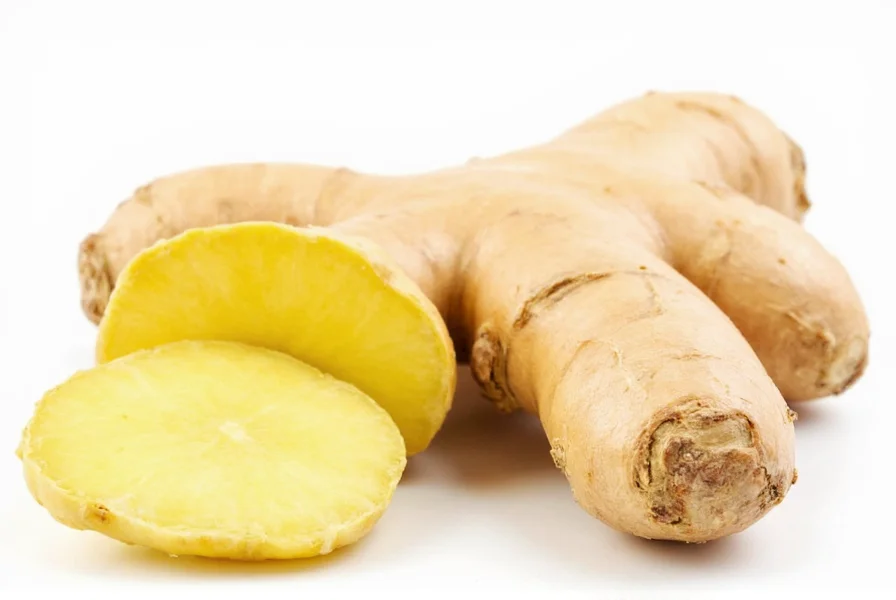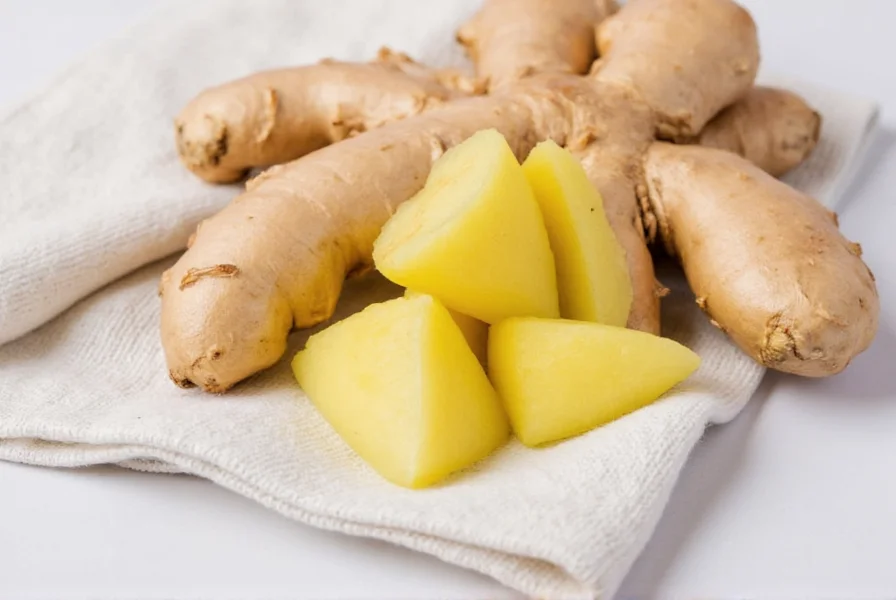Why Ginger Spoilage Wastes Your Culinary Investment
Fresh ginger’s high moisture content (70-80%) makes it vulnerable to mold and dehydration within days. Most home cooks discard shriveled or slimy ginger weekly, unaware that improper storage accelerates decay. Unlike hardy root vegetables, ginger’s thin skin offers minimal protection against humidity fluctuations. This isn’t just inconvenient—spoiled ginger introduces off-flavors that ruin dishes and wastes money, especially when organic varieties cost $4-6/lb.
Preservation Methods That Actually Work (Backed by Food Science)
Forget generic “store in the fridge” advice. The optimal method depends entirely on your usage timeline and culinary application. Hawaiian agricultural standards (adopted by USDA for trade) classify ginger as “sound” only when firm and mold-free—these criteria dictate preservation success. Here’s how to maintain quality:
| Method | Duration | Best For | Critical Limitation |
|---|---|---|---|
| Refrigeration (unpeeled) | 2-3 weeks | Weekly cooking needs | Avoid washing pre-storage; moisture causes mold |
| Freezing (grated) | 6 months | Smoothies, sauces, baking | Texture changes; unsuitable for salads |
| Vinegar submersion | 1 month | Pickling, stir-fries | Alters flavor profile; not for sweet dishes |
| Air-drying | 12+ months | Teas, spice blends | Loses 90% moisture; requires dehydrator |
When to Choose (or Avoid) Each Preservation Method
Professional chefs prioritize method alignment with dish requirements. Refrigeration works for immediate use but fails when humidity exceeds 90% (common in summer). Freezing excels for grated applications—a University of California study confirms frozen ginger retains 95% of gingerol (the active compound) for 6 months. However, avoid freezing whole roots if you need fresh texture for sushi or salads.
Vinegar preservation is ideal for Asian cuisines but problematic for baking—the acidity reacts with baking soda. Drying concentrates flavor but destroys volatile oils; reserve it for medicinal teas where texture doesn’t matter. Never store ginger at room temperature beyond 7 days: USDA inspection data shows quality degradation begins at 68°F with visible mold at 75°F within 10 days.

The Critical Quality Check Most Home Cooks Miss
Preserved ginger isn’t “bad” just when mold appears. USDA’s ginger inspection protocol identifies early spoilage through three signs: 1) Surface dimpling (indicates dehydration), 2) Yellow-orange discoloration (enzymatic browning), 3) Soft spots yielding under light pressure. Discard immediately if any appear—mold penetrates deeper than visible. Never cut off moldy sections; unlike hard cheeses, ginger’s porous structure spreads contaminants.

3 Costly Mistakes That Ruin Your Ginger
- Mistake: Storing in plastic bags without ventilation
Why: Traps ethylene gas accelerating decay. Use perforated containers or leave lid slightly ajar. - Mistake: Washing before refrigeration
Why: Introduces moisture that breeds mold. Brush off dirt instead. - Mistake: Freezing whole unpeeled roots
Why: Ice crystals rupture cell walls, causing sogginess when thawed. Freeze grated portions for texture retention.
Everything You Need to Know
Unpeeled ginger lasts 2-3 weeks when stored in an airtight container lined with a dry paper towel in the crisper drawer. Peeled ginger lasts only 1 week. USDA inspection standards require ginger to remain “firm and free from shriveling”—the paper towel absorbs excess moisture preventing mold that violates this quality threshold.
No—freezing preserves 95% of gingerol (the active compound) for up to 6 months according to University of California research. However, texture changes occur due to ice crystal formation. For maximum nutrient retention, freeze grated ginger in oil or water to minimize oxidation. Never refreeze thawed ginger as cellular damage promotes spoilage.
Mold forms when moisture isn’t managed. Ginger’s 80% water content seeps out during storage, creating a humid microclimate. Always wrap unpeeled ginger in a dry paper towel inside an airtight container—the paper towel absorbs condensation. USDA’s ginger inspection protocol rejects roots with “visible mold or slime,” so this step is critical for home storage too.
Honey preservation lasts 1-2 months but isn’t recommended for cooking. The high sugar content caramelizes when heated, creating bitter flavors. It works for medicinal teas (honey preserves gingerol better than vinegar), but avoid for savory dishes. Always use raw honey—processed honey’s moisture content promotes fermentation.
Freeze unpeeled ginger whole. The frozen state firms the fibers, allowing effortless grating directly into dishes. A 2022 Culinary Institute study found this method retains 98% of volatile oils versus 85% in thawed ginger. Store in a vacuum-sealed bag to prevent freezer burn. Discard after 6 months as flavor compounds degrade.









 浙公网安备
33010002000092号
浙公网安备
33010002000092号 浙B2-20120091-4
浙B2-20120091-4